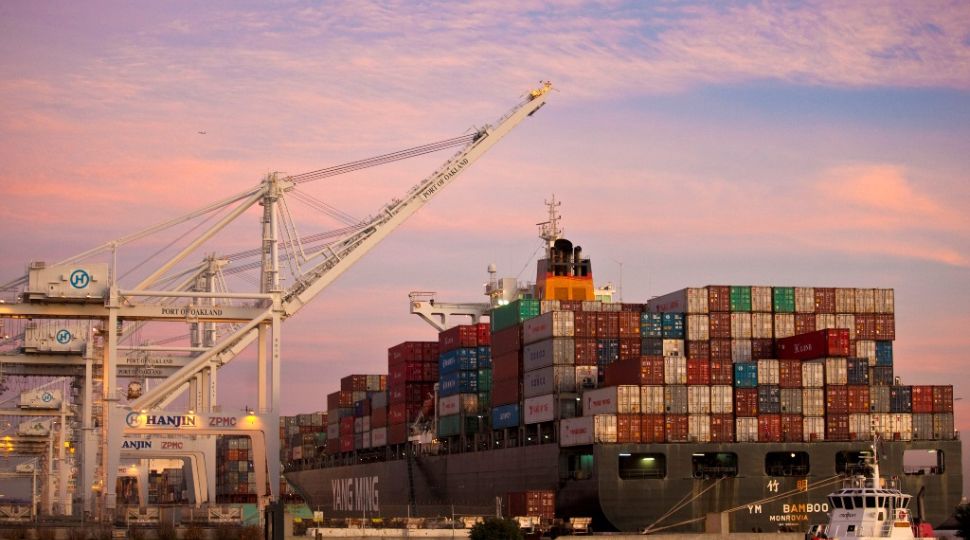A Polar Silk Road: The Arctic in China’s Foreign and Economic Policies

China’s Arctic Strategy
On 26 January, China published a white paper titled “China’s Arctic Policy.” It is the first such document concerning the Arctic. The paper notes that climate change is making the Arctic more accessible and raising its strategic, economic and scientific importance. These changes also affect the climate in other regions, including East Asia, and thus the living conditions of the population. Therefore, the stable and balanced development of the Arctic is no longer only in the sphere of interest of the Arctic states, but of the entire international community. China was described in the document as a “Near-Arctic State.”
China’s priority in the Arctic is economy. Water routes in the region should form a Polar Silk Road as part of the Belt and Road Initiative (BRI). This could shorten sea transport times between China and the EU (in 2016, this was responsible for over 60% of the value of bilateral trade) by about a third compared to the route through the Suez Canal. This would bring about financial savings, reduction of fuel consumption and less pollution. Therefore, Chinese companies will be encouraged to use this routes. The first Chinese ship crossed the Arctic in 2013. In 2017, Chinese vessels undertook only 14 voyages on this route. However, according to the estimates of the Chinese Polar Research Institute, from 5% to 15% of China’s trade transport could be conducted via the Arctic by 2020. By using the Arctic lanes it would also be possible to avoid the Malacca Strait and the Indian Ocean, where sea lanes are controlled by the U.S. fleet. From China’s point of view as the world’s largest consumer of energy raw materials, the prospects for exploiting oil and natural gas in the Arctic (an estimated 13% and 30% of undiscovered global resources, respectively) are important. In addition, China is interested in fishing, mining and tourism. The white paper declares China’s readiness to cooperate with other partners and respect international law, the natural environment and traditions of local communities.
Chinese Policy Instruments in the Arctic
China mainly uses financial instruments to mark its presence in the Arctic. The Chinese overall investment in the region is estimated at $90 billion. One area is ensuring the security of oil and gas supplies, for example state-owned company CNPC and the Silk Road Fund’s involvement in the Russian Jamal LNG terminal project, from which 4 million tonnes of natural gas will be imported into China. Chinese companies also take part in transport projects, including the operation of the Xi’an-Kouvola railway connection in southern Finland and infrastructure initiatives, such as the expansion of Russian ports. They also invest in the mining sector in Greenland (the autonomous territory of Denmark), including iron, copper and rare earth metals, and are active in the telecommunications and green technologies industries in, for example, Finland and Iceland. Loans for investment, mainly in northern Russia, are provided by the Chinese Development Bank.
The intensification of economic cooperation is accompanied by strengthening political relations. In 2010, China and the U.S. established a mechanism for an annual dialogue on the law of the sea and Arctic issues. In 2012, China and Iceland signed the first intergovernmental framework agreement on cooperation in the Arctic. Since 2013, China has been consulting with Russia on Arctic topics. A similar dialogue exists in relations with the United Kingdom and France. In 2016, China, Japan, and South Korea initiated tripartite high-level talks on economic and scientific topics related to the Arctic. In recent years, relations between China and Norway, which deteriorated after the Nobel Peace Prize was awarded to the Chinese dissident Liu Xiaobo in 2010, have also improved. In 2013, China gained observer status on the Arctic Council (AC), the most important organisation dealing with regional development (among its eight permanent members are the United States, Russia and Canada). This has given China the opportunity to participate in AC meetings and access information, but without the right to vote.
China also conducts scientific activities in the Arctic. A signatory to the Spitsbergen Treaty since 1925, it has the right to conduct research and use Svalbard’s natural resources. Since the mid-1980s, China has organised more than 30 scientific expeditions to the Arctic. In 2004, the Yellow River research station was created on Spitsbergen. In 2013, the China-Nordic Arctic Research Centre was established. China is also developing a fleet of icebreakers used for scientific purposes. Only one vessel, the converted Ukrainian-built ship Xue Long (Snow Dragon), is currently in commission. However, Xue Long 2, the first such vessel fully built in China, is due to enter into service in 2019.
Conclusions
Activity in the Arctic is an expression of China’s ambition under Xi Jinping as the country strives to have a greater impact on global issues. The Polar Silk Road is designed to boost the Chinese economy. However, its use may encounter serious obstacles in the short term, including the still low availability of routes, the high costs of ship insurance, difficulties for container ships, and the relatively high costs of extracting raw materials in the Arctic.
In the short term, the Arctic will probably not be an area of strategic competition with other countries, including the United States. China lacks territorial claims and focuses on achieving more important goals, in particular strengthening control of the South China Sea (SCS). The white paper’s emphasis on cooperation with other countries and within multilateral organisations is intended to alleviate concerns regarding unilateral and destabilising activities by China in the Arctic. However, referring to respect for international law may not sound credible in the context of China’s attitude towards the SCS.
Chinese investments could prove a long-term challenge for the interests of other countries, mainly the United States. This applies, for example, to China’s activity in Greenland, where the U.S. Thule military base is located. China’s activities may be limited by some of the Arctic states, such as Denmark, which is a U.S. ally within NATO. For example, the Danish authorities blocked a Chinese company’s takeover of a former naval base in southern Greenland in 2016, and the island’s authorities rejected a Chinese offer to upgrade two local airports in 2018. Although the involvement of Chinese capital and technology would be a contribution to the development of the Arctic, it may also have the effect of more tightly bonding certain countries in the region with China along with other investments and which could translate into an increase in political influence.
From the EU and Polish perspective, the development of Arctic sea routes may increase the competitiveness of exports to East Asia. At the same time, lower transport costs on these routes may affect the attractiveness of BRI rail connections through Poland. Increasing Chinese investment may also raise concerns about the security and economy of the Arctic EU Member States. Poland, as an observer on the AC, can cooperate with China, for example in the area of infrastructure or environmental protection, in AC working groups, or by establishing a permanent dialogue (similar to those operated by China with France and the United Kingdom, which are also observers on the AC). In addition, the activity of the Polish research station Hornsund on Spitsbergen should support the development of scientific contacts. When considering cooperation with Chinese partners, for example as part of infrastructure projects, Poland should take into account the strategic interests of allies, including the U.S. and Denmark, which are important security and energy partners.




